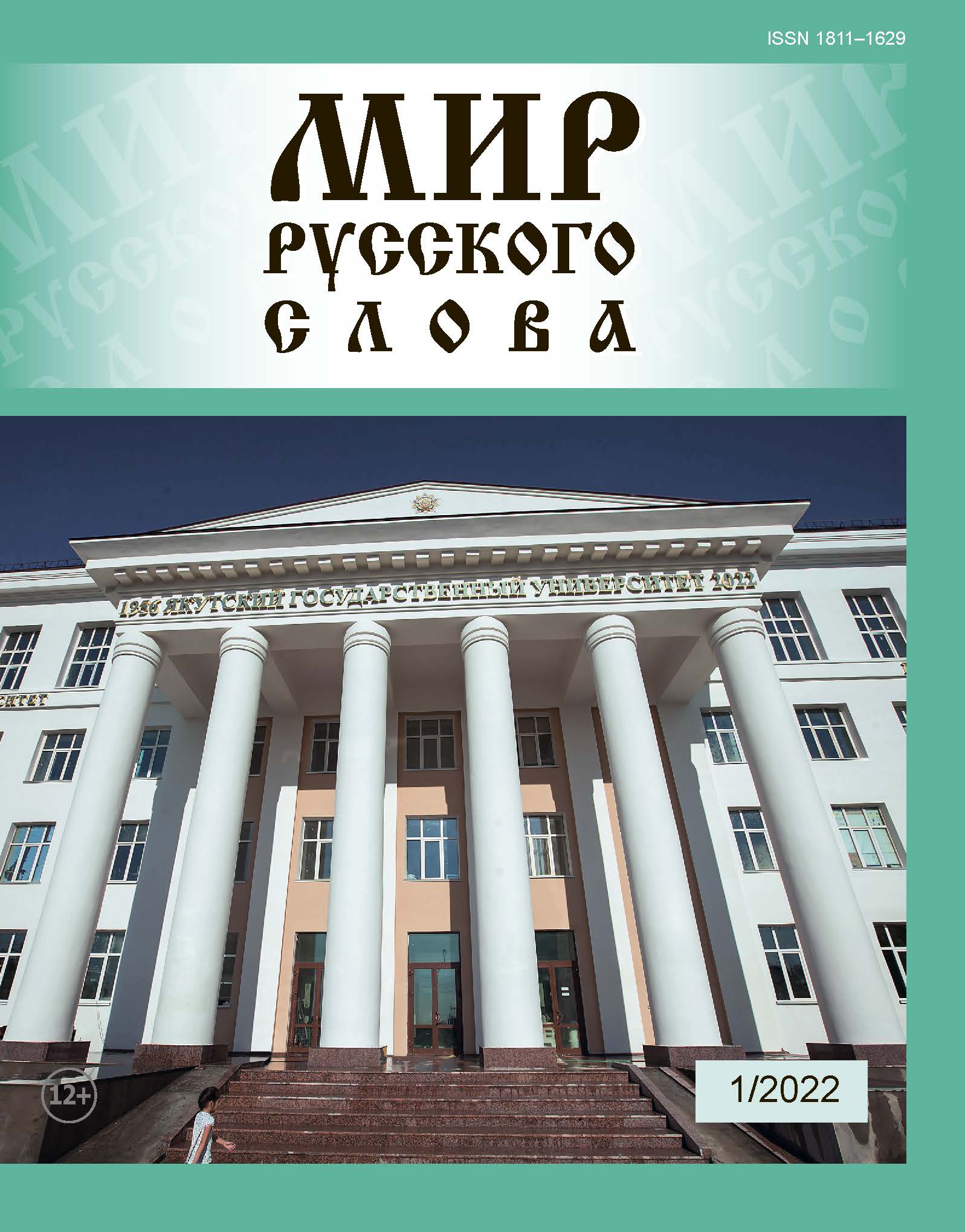Transformation of hagiographic tradition in a story “Sonechka” by Ludmila Ulitskaya
DOI:
https://doi.org/10.24412/1811-1629-2022-1-48-54Abstract
The article is devoted to the pragmasemantic analysis of the problem of axiological anomaly in the stream of consciousness of a character, its linguistic embodiment and evaluative interpretation in a literary text. The stream of consciousness as a passive form of a character’s monologue speech serves as a direct translation of his thinking and associative images into verbal language. In Vladimir Nabokov’s metanovel “Despair”, the image of the stream of consciousness demonstrates the selfrefl ection of the character-narrator about the values that are relevant to him and gives an idea of the transformation of the picture of the world that he reconstructs in his own novel. The shift in values, fixed by the evaluative anomaly, becomes an important characterological element of the artistic image of the character-narrator. In the stream of consciousness, contradictory or tautological evaluative preferences of the character were found according to the parameters of deviation from axiological norms: intellectual / sensory activity of consciousness; the possibility / impossibility of coexistence of an alternative; priori / posteriori judgment; positivity / negativity of value choice; variability / standardness of axiological norm; diachronism / synchronicity of the functioning of assessments; prestige / lack of prestige of the values of the individual and society; consideration / reality; intention / decision. The axiological anomaly of the character’s stream of consciousness manifests itself in subject-object, intuitivelogical, causal, spatial-temporal, diachronous-synchronous, parallelalternative relationships and is expressed by negative semantics of vocabulary, constructions, syntactic or textual structure of different ways of linguistic embodiment. In “Despair”, axiological oppositions of one’s own and another’s / individual and social / abnormal and normative in the thinking of the main character Herman generates his conscious priority of proper-individual abnormal values over socialcollective value stereotypes. In the personal linguistic identifi cation of his own dual monological personality — the criminal and the writer — the character rationalizes the anomalous moments of his thinking about the real event and the literary plot with a stream of consciousness, turning the unprecedented into the happened, the unreal into the real, the unusual into the ordinary, the anomaly into the norm.
Keywords:
Modern Russian prose, hagiographic tradition, reception of hagiographic texts, Liudmila Ulitskaya
Downloads
Downloads
Published
How to Cite
Issue
Section
License
Articles of "The World of Russian Word" are open access distributed under the terms of the License Agreement with Saint Petersburg State University, which permits to the authors unrestricted distribution and self-archiving free of charge.




